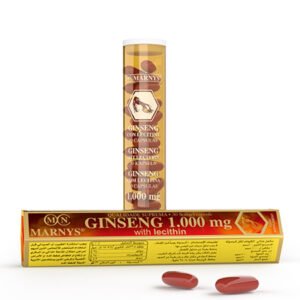What is allergy and why does it happen?
An allergy is a reaction of the immune system to something that does not bother most people. Allergies occur when the immune system reacts to a foreign substance or food that does not usually cause a reaction in most people.
Allergens are elements as different as pollen, bee venom, insect bites, dust mites, fungi molds or a lot of foods like nuts in case of food allergies. When our organism comes into contact with them, the body responds with different symptoms that may affect the skin, the digestive system or the respiratory tract, causing allergic reactions.
Causes of allergy
Allergies begin when the immune system mistakes a harmless substance for a dangerous invader. The immune system produces antibodies that stay awake to this allergen. When re-exposed to an allergen, these antibodies can release a number of immune system chemicals, such as histamine, that cause allergy symptoms. Some of the most common causes of allergies are:
- Airborne allergens, such as pollen, pet dander, dust mites and moulds.
- Certain foods, especially peanuts, tree nuts, wheat, soy, fish, shellfish, eggs and milk.
- Insect stings, such as bee or wasp stings.
- Medicines, especially penicillin or penicillin-based antibiotics.
- Latex or other materials that are touched, which can cause allergic skin reactions.
- If you have a family history of asthma or allergies, such as allergic rhinitis (hay fever), hives or eczema.
Spring allergy and its types
Spring allergy is caused by pollen that are small grains produced in the male reproductive system of plants and are spread through the air or by insects to the female reproductive system of the plant. The immune system of allergic people identifies these pollen as enemies and responds by releasing histamine, the substance responsible for the typical symptoms suffered by people with allergies.
Pollen Allergy: Grasses
Among all the existing pollens, the one of the grasses -wheat, rye, rice, corn, barley- is the one that has the highest allergenic capacity. Besides, the capacity to cause allergy lasts very much in time due to the fact that the different grasses bloom at different times. Other pollen that causes allergies are those of trees.
Sun allergy or photophobia
During the longest and brightest days, we expose ourselves to the sun for a longer number of hours and this exposure generates, in some people, the badly called sun allergy, since it is not properly an allergy. Under this name, it includes different skin disorders that are known for causing a skin rash as the most common symptom. It is not completely clear why this reaction is produced in some people and not in others.
Another situation that many people feel is a ‘sun allergy’ when in fact it is not, is the photic sneeze or reflex sneeze from bright light. This is an involuntary reaction that many people have when they look directly at the sun and sneeze. When people react to a sneeze, many mistake it as an allergy to the sun or to bright light, but what actually happens is that there is an overstimulation of the optic nerve which also stimulates the trigeminal nerve (which crosses profusely on both sides of the face) causing the sneeze.
Spring allergy symptoms and types
There are several ways that can help you if you think you have a spring allergy. The typical symptoms of itchy throat and eyes or difficulty breathing are a good warning sign. However, this suspicion should be confirmed by a health professional to give you the necessary tests to avoid any possible complications that could lead to a serious allergic reaction such as allergic asthma. The most common symptoms for those with pollen or grass pollen allergy are the following:
- Tearing, itching, eye redness, swelling in the lower eyelids, conjunctivitis.
- Congestion and a runny nose, bronchial asthma
- Sneezing, headache, fatigue and tiredness.
- Irritability, sadness, difficulty falling asleep.
How to relieve the symptoms of allergy?
According to the Aerobiology Committee of the SEAIC, you may follow the tips below to reduce or relieve the symptoms of spring allergy:
- Avoid going to the countryside and any outdoor activities on ” peaks ” days.
- Close the windows at home. Ventilate the house during midday and for a short time.
- Use sunglasses outside and a mask to cover your nose and mouth on high-pollination days.
- Drive with the car windows up.
- Take a shower and change your clothes when you get home to avoid pollen coming into your nose, eyes or mouth.
- If you live in the countryside, do not mow your lawn or prune on high-pollination days.
- Do not self-medicate; go to the doctor if you have allergic symptoms.
There are different treatments to deal with spring allergy. The most commonly used are the following:
- Immunotherapy, also known as the allergy vaccine. It consists of the administration of the same element that causes the allergy so that our immune system is able to neutralize it. It is a long- term treatment that has had very good results.
- Treatment. Some medicines are able to stop the action of histamine, the substance responsible for the main symptoms of allergy. There are also nasal decongestants that work to relieve the symptoms.
How can allergies be prevented?
Prevention of allergic reactions depends on the type of allergy you have. Some general measures are as follows:
- Avoid known triggers. Even if you are treating your allergy symptoms, try to avoid triggers. For example, if you are allergic to pollen, during peak pollen times, stay indoors with doors and windows closed. If you are allergic to dust mites, dust, vacuum and wash sheets often.
- Keep a diary. When trying to identify what causes or worsens your allergy symptoms, record your activities, what you eat, when symptoms occur and what seems to help. This can help you and your doctor identify triggers.
- Wear a medical alert bracelet. If you have had a severe allergic reaction, a medical alert bracelet (or necklace) can be used to warn others that you have a severe allergy, in case you have a reaction that prevents you from communicating.
Tests to detect allergy and its kinds?
The only way to find out if we are allergic or not is to get in touch with the allergen. The tests that are carried out to detect allergy use the skin of the patient to measure the response to some substances.
The most common skin tests are the prick-tests. The doctor puts a drop of allergenic extract on the skin of the forearm and with the help of a small lancet puts it on the most top part of the skin of the patient. In just 15 or 20 minutes, the results will be available. If the skin is red, it is likely that we are suffering from an allergy. This kind of test is especially useful for allergies caused by pollen.
Other tests used to detect allergies are intradermal and epicutaneous tests and contact patches. In any case, it is important to remember that allergy tests are painless and only cause mild itching so you should not be afraid to do them if you think you may be affected.





